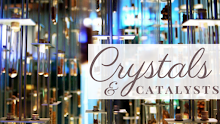Designer drugs make up a larger proportion of the illegal drug market and although they don’t have a specific definition, it's a term that’s used to describe illegal and abused drugs such as ketamine, fentanyl, LSD, PCP, quaaludes, methcathinone, and amphetamine derivatives such as ecstasy and cocaine. Chemists are continually trying to solve the growing problem of designer drugs – whose regulation is elusive because they involve ever-changing formulas. This is one of the topics which has been discussed at a session at the 250th ACS National Meeting & Exposition this summer in Boston U.S.A. “It is relatively simple to take a drug that has a known psychoactive effect and change one substituent group to make it into another drug that is not yet classified as illegal but provides the same or similar psychoactive high”, explains William Hoffmann, a postdoctoral student at West Virginia University’s forensic and investigative science department. Hoffmann and his colleagues have been using mass spectrometry to differentiate between similar drugs to define illegal from legal drugs. Another topic that was discussed was bath salts. “Bath salts” are synthetic analogues of the naturally-occurring cathinone, an amphetamine-like stimulant found naturally in the khat plant. These drugs have been linked to paranoia, hallucinatory delirium, psychotic and violent behaviour, as well as deaths. Scientific research aims to develop and optimise a rapid, simple and reliable laboratory test that can analyse commonly abused synthetic cathinones in saliva and the scientists hope that such technology will be widely available soon.
References [1] [2] - Images [1]



Comments
Post a Comment